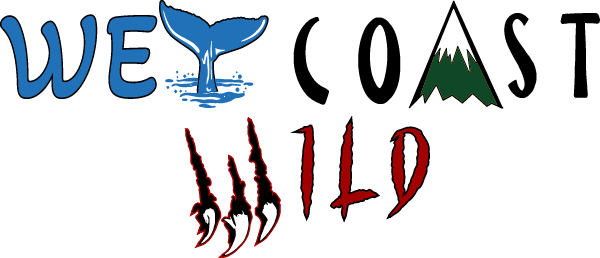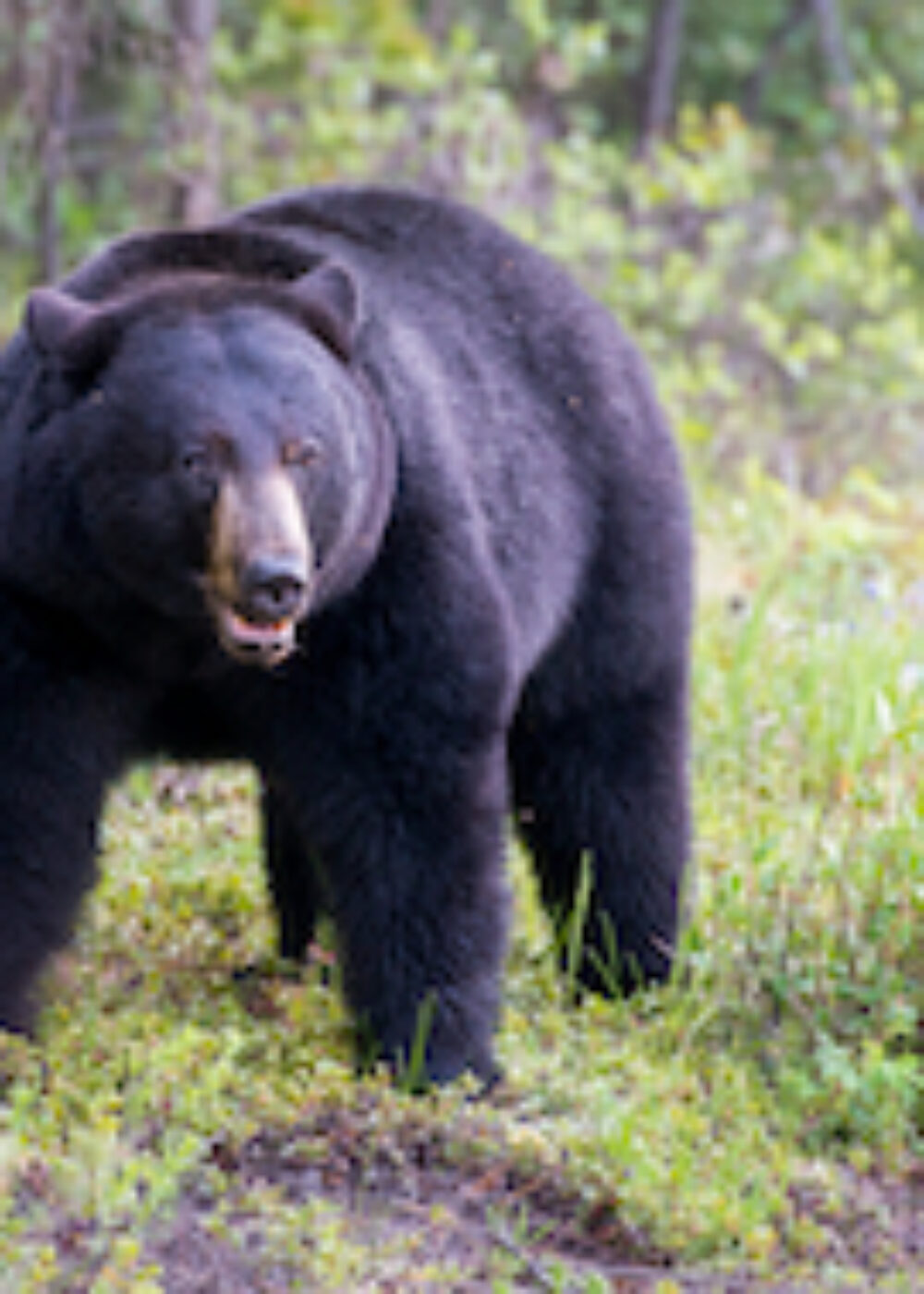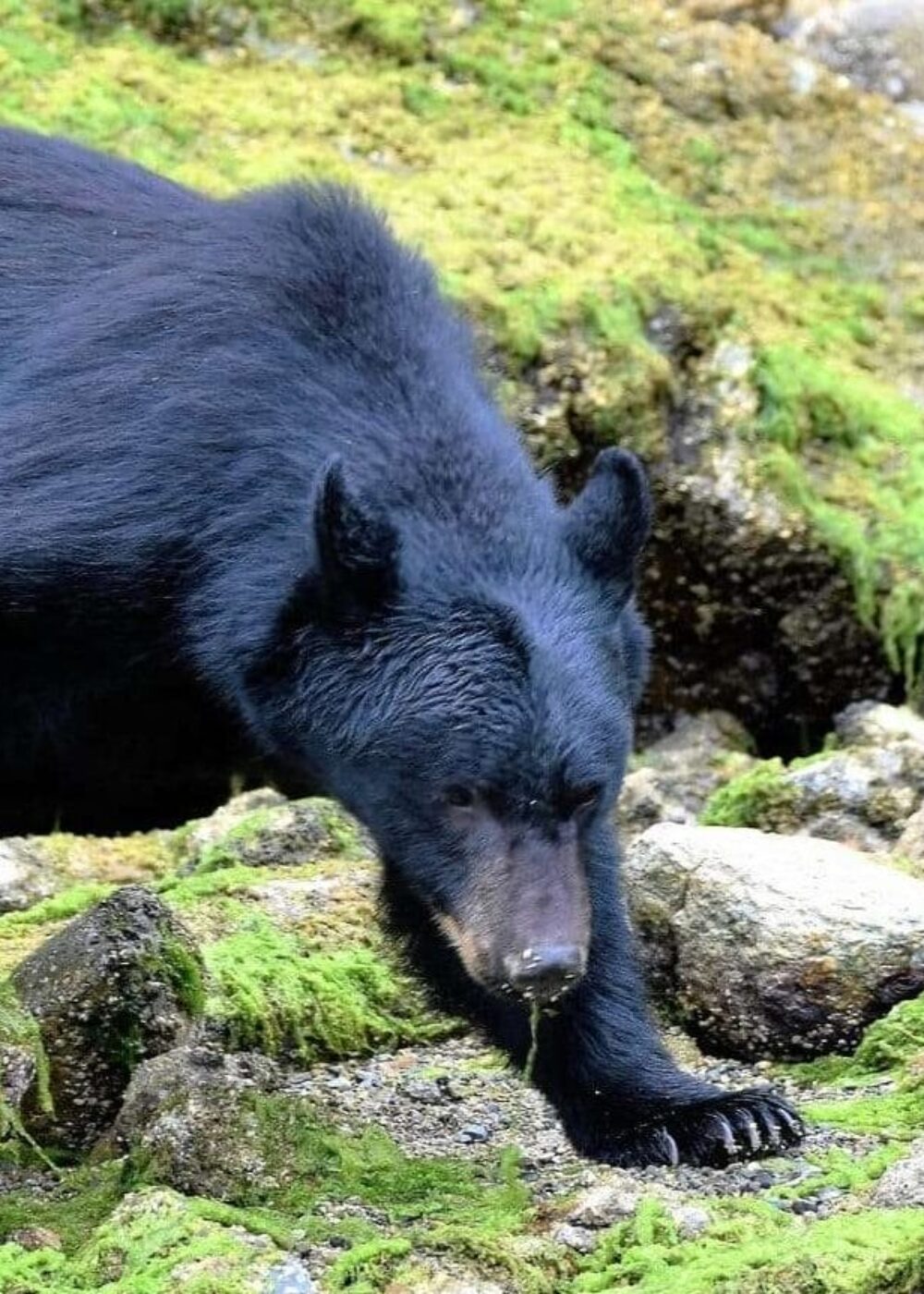Vancouver Island residents frequently encounter black bears, affecting both the bears’ behaviour and human perceptions of these creatures. This relationship is complex and has various facets.
- Firstly, some residents see bears as a threat, leading to fear and calls for authorities to cull the population.
- Conversely, others appreciate the bears as part of the island’s rich wildlife and advocate for their protection.
- Thirdly, many locals and tourists are attracted to the island specifically to see the bears, boosting the local tourism industry.
- Lastly, these human interactions can alter bear behaviour, often acclimatizing them to human presence, leading to increased encounters and potential conflicts.
Attacks on Humans
Despite the island’s efforts at cohabitation, black bear attacks on humans, although rare, do occasionally occur and can result in serious injuries or fatalities.
In most incidents, the bear’s aggressive behaviour is sparked by surprise encounters or when they’re defending their food or cubs.
It’s important for locals and tourists to bear-proof their properties and campsites and learn how to react if they encounter a bear. They shouldn’t run but stand tall, make noise, and slowly back away. If attacked, they’re advised to fight back using any available tools.
Understanding bear behaviour and taking precautions can significantly reduce the risk of attacks, ensuring a safer coexistence between humans and bears on Vancouver Island.
Interspecific Predatory Relationships
Interspecific predatory relationships significantly shape the behaviour and survival strategies of Vancouver Island’s black bears. Black bears face competition from cougars and wolves. To minimize conflict, black bears adapt their behaviour, often feeding at different times or in less desirable areas. They’ve also become adept at climbing trees, a skill not shared by their grizzly counterparts.
Livestock and Crop Predation
Moving on from human encounters, black bears on Vancouver Island also pose a significant threat to livestock and crops. They’ve been known to attack animals such as sheep, goats, and poultry, causing considerable loss to farmers. Moreover, bears often raid crops, particularly those that have fruit.
To illustrate, here are some common issues:
- Bears break fences to access livestock, causing damage to property.
- They pose a threat to the safety of free-range animals.
- Crop raiding by bears often leads to significant yield losses.
- The presence of bears can lead to increased stress in livestock, affecting their health and productivity.
Farmers must be vigilant and adopt effective strategies to mitigate this threat, thus protecting their livelihood.
Hunting
In light of the threats posed to livestock and crops, hunting has become an essential and sometimes controversial strategy for managing the black bear population on Vancouver Island. It’s not just a sport; it’s a critical measure for maintaining the region’s economy.
Local farmers, ranchers, and even residents are often granted permits to hunt these bears. They don’t randomly kill bears, but target those causing significant damage. Regulated hunting also helps to keep the bear population in check, preventing overpopulation and its associated problems.
However, it’s a delicate balance. Over-hunting could lead to a decline in the bear population. That’s why hunting regulations are continually reviewed and adjusted to ensure sustainability.
Hunting, when done responsibly, can contribute to a harmonious co-existence between bears and humans on Vancouver Island.



